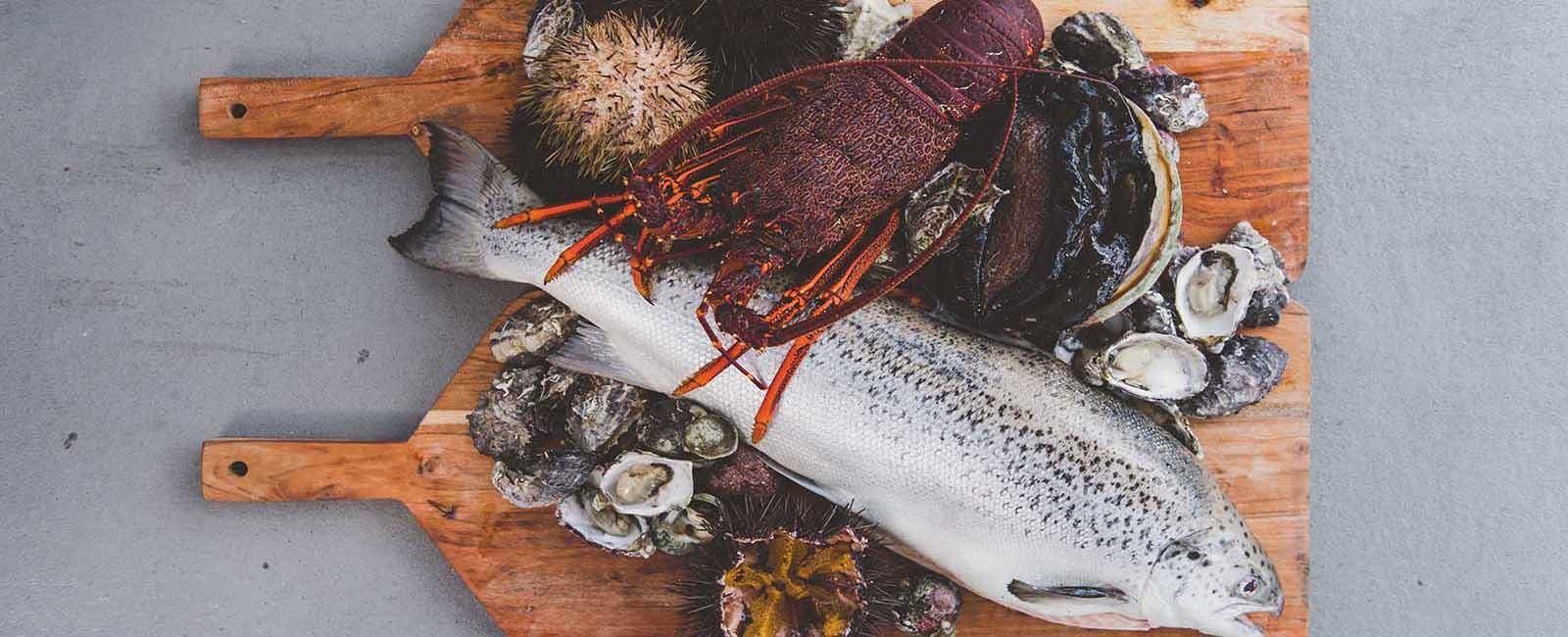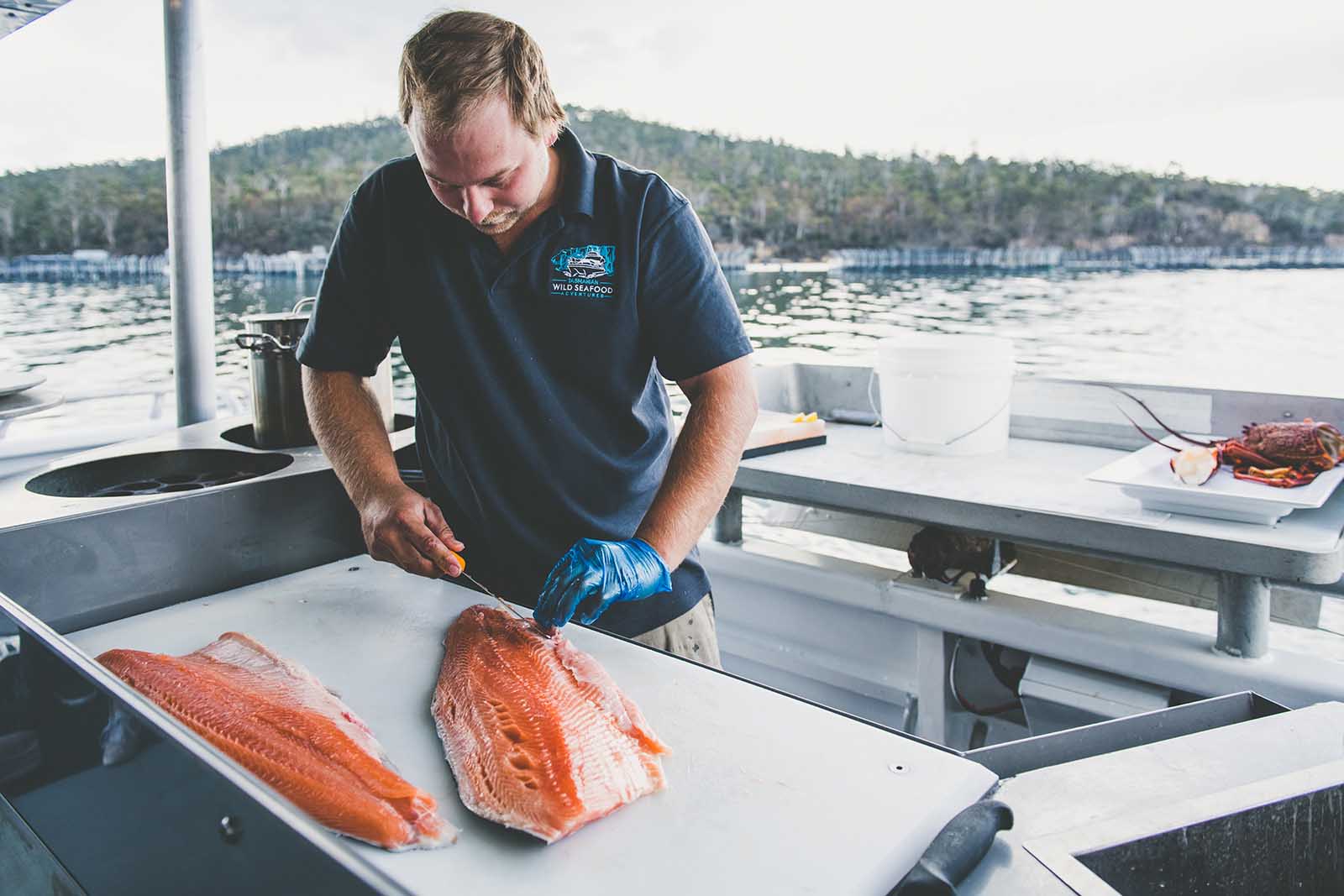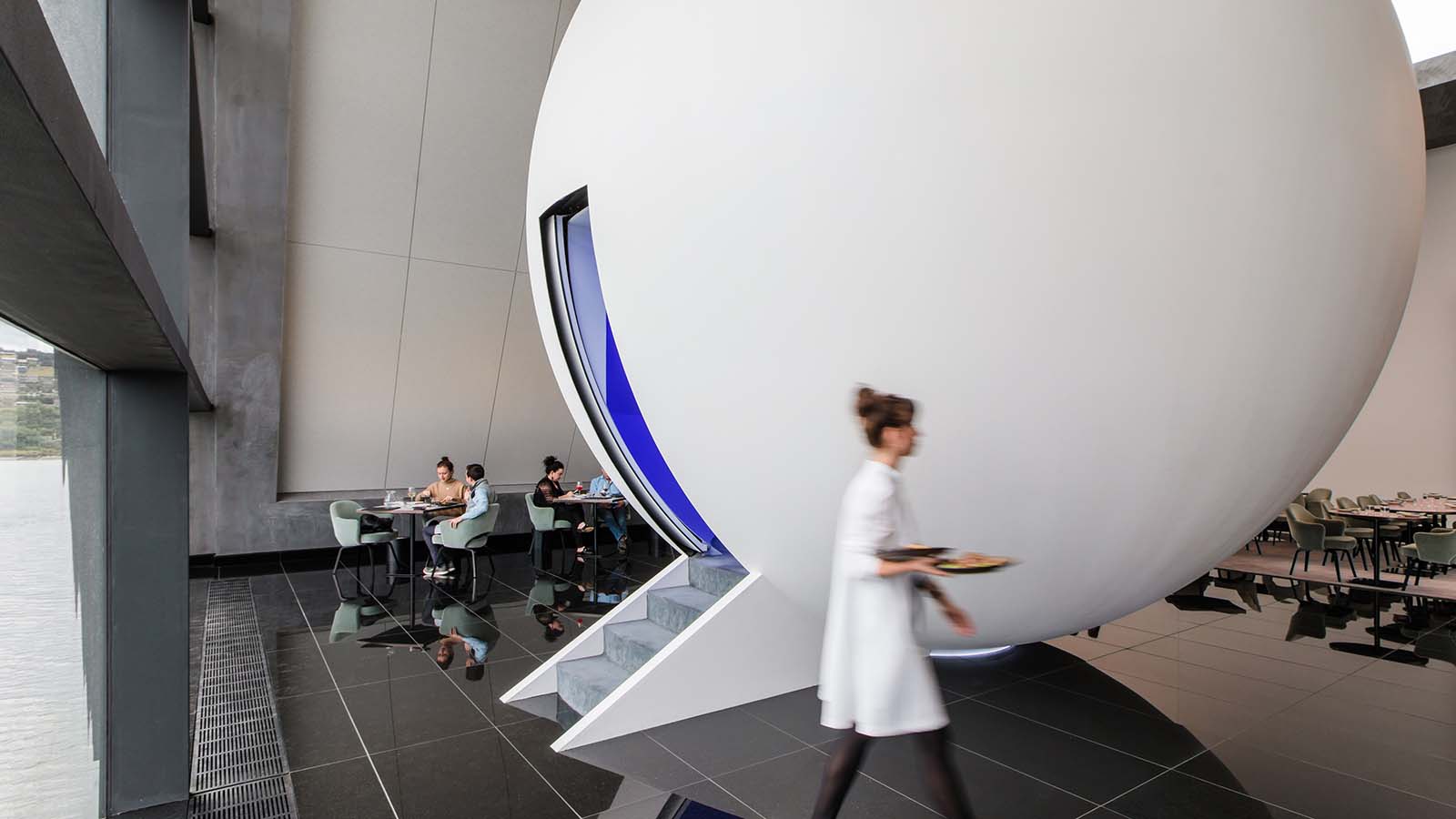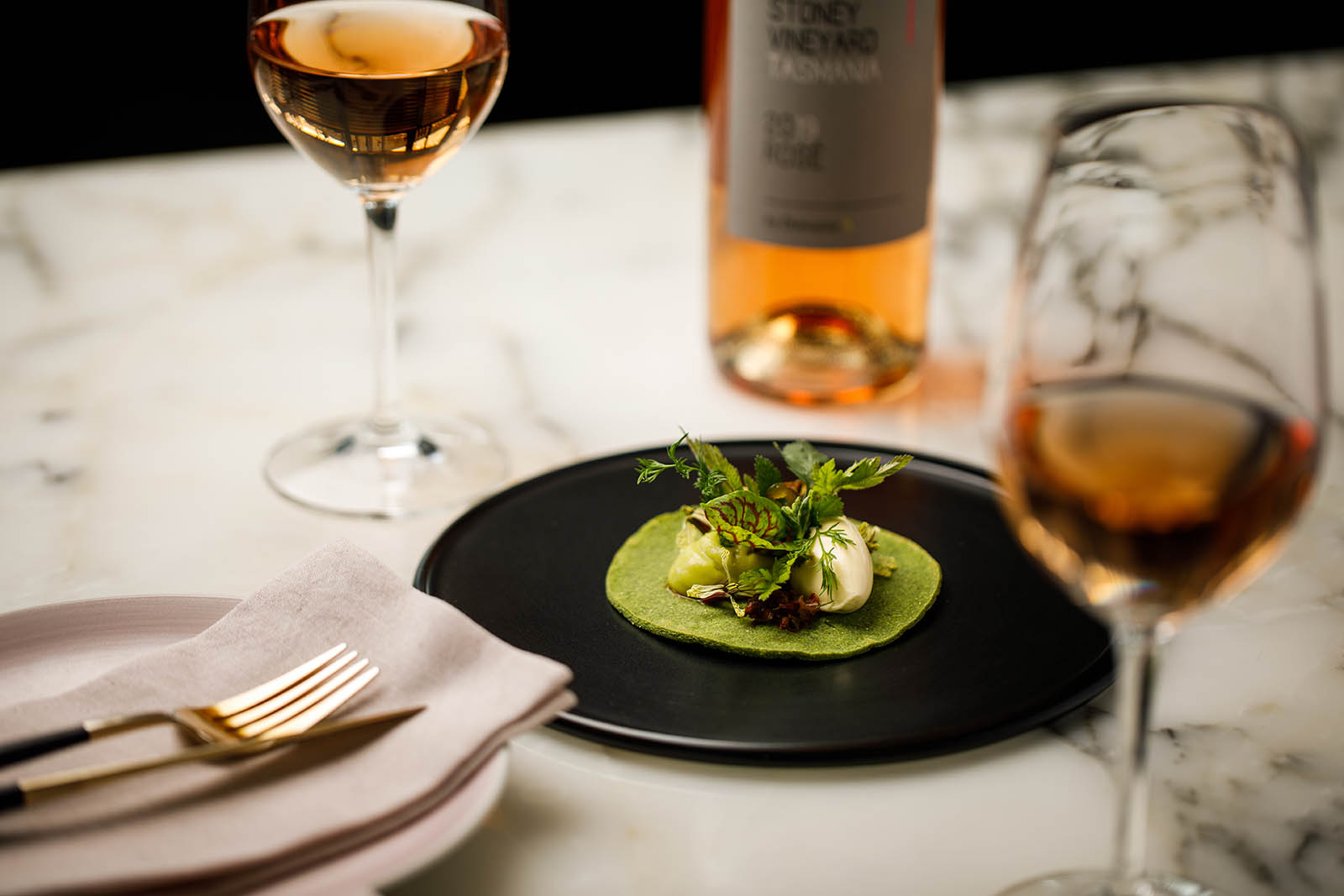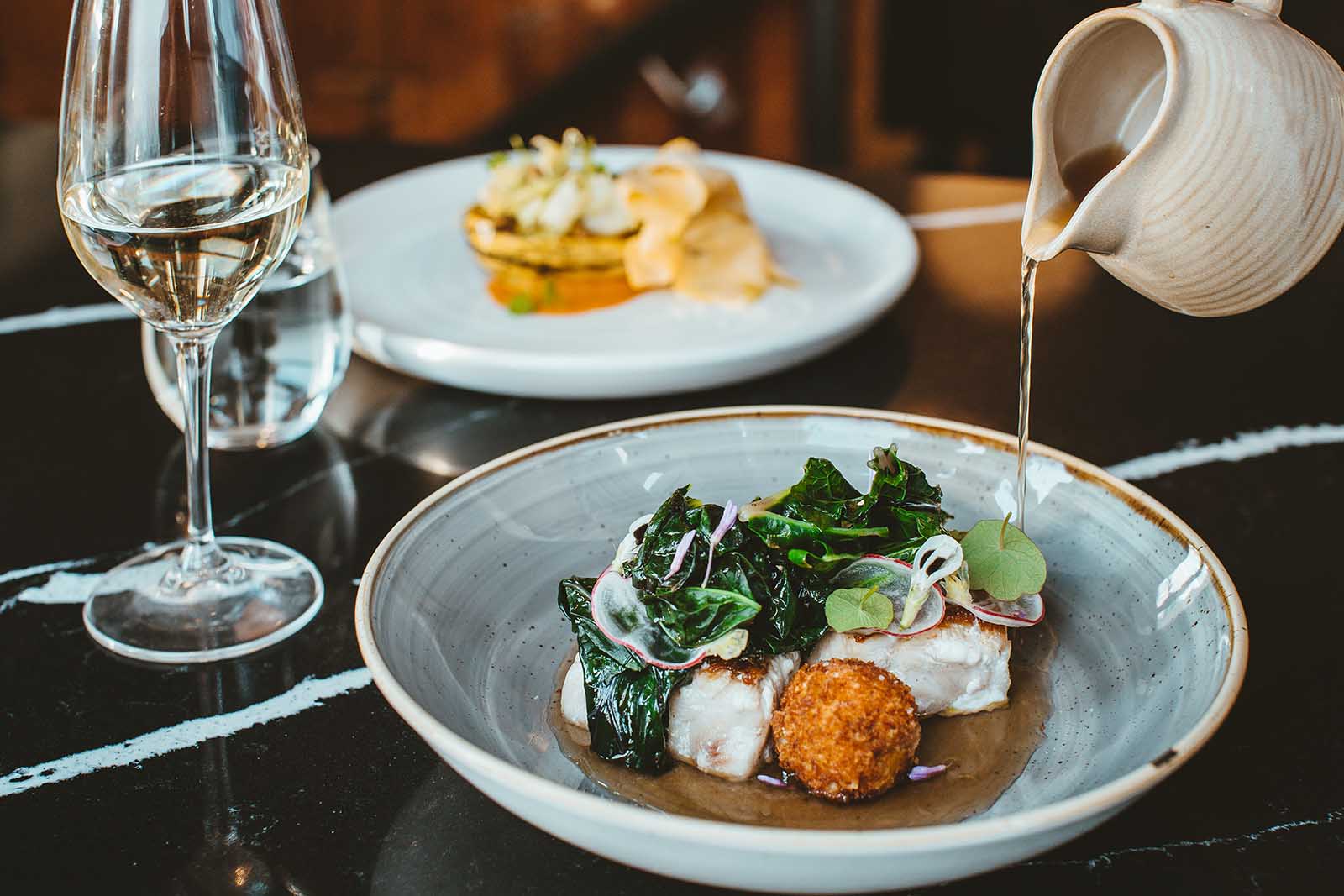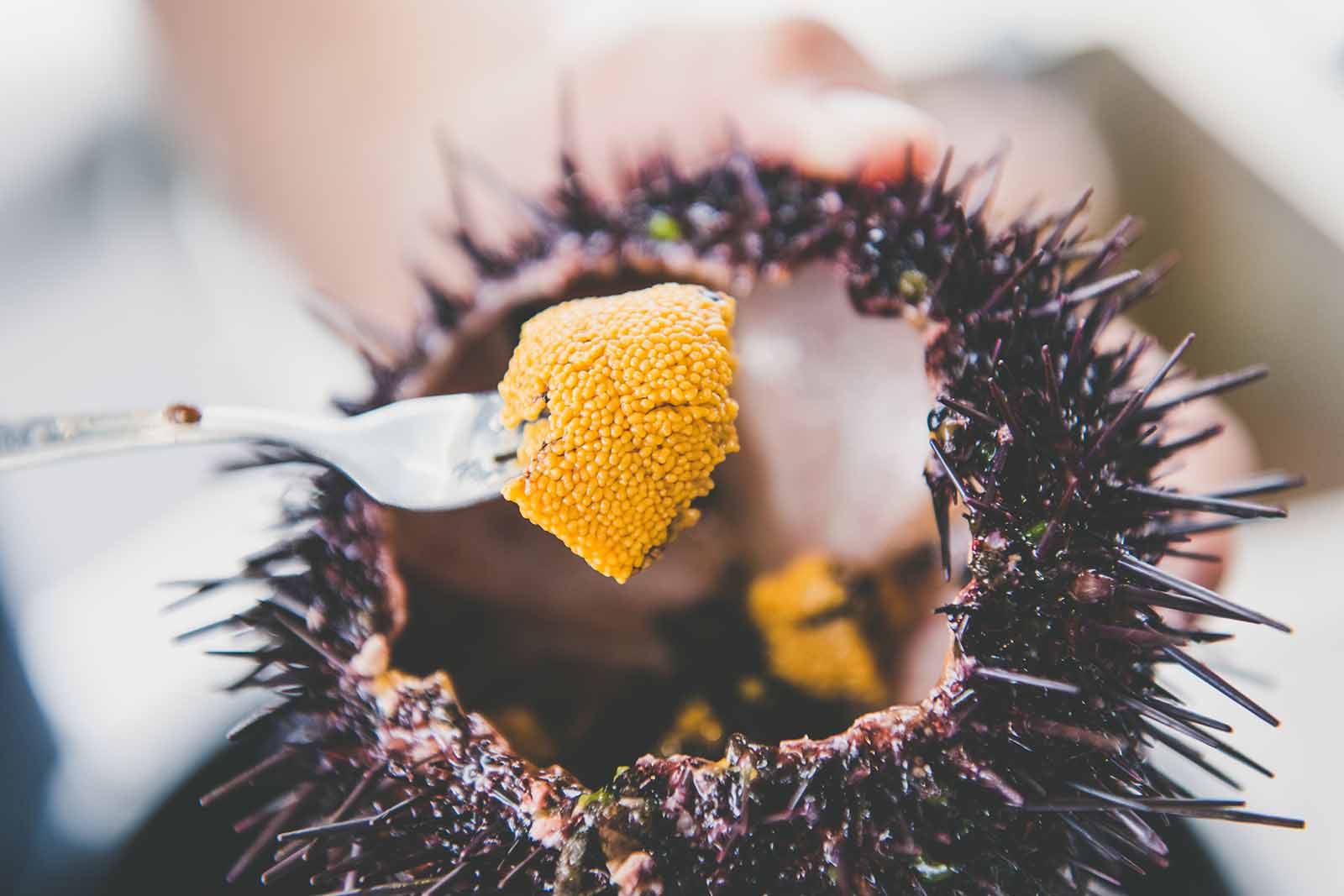
Shane Wilson emerges from the water like an overgrown slick black seal shaking off the sea and boarding the boat to show off his haul. Clad in a thick black wetsuit, only moments earlier he had dived from the deck of Cuttlefish, Tasmanian Wild Seafood Adventures’ 55’ luxury catamaran, into the depths of Bull Bay. When he resurfaced, the bag was full of spiky sea urchins and hand-sized periwinkle shells, all destined for the dining table.
Wilson is both the skipper and diver on this cruise which offers true deep-to-dish dining delight. Leaving from Hobart’s Elizabeth Street Pier the catamaran cruises swiftly down the Derwent River to the towering cliffs of Taroona and Blackman’s Bay on morning and afternoon cruises.
This is Wilson’s fourth summer skippering Cuttlefish, but he has been diving in these waters for 13 years and is passionate about Tasmania’s seafood industry. “I want to show off the best fisheries on the coast,” he says, and what better way to demonstrate the quality of Tasmania’s fisheries than by serving up seafood just plucked from the ocean?
Good news, visitors to the tiny isle can enjoy it fresh from the source on a self-guided taste tour of Hobart.
Tasmanian fresh
Tasmania may be Australia’s smallest state but it is surrounded by pristine and bountiful waters, supplying more seafood by value than any other state in the country and contributing more than $1.5 billion to the Australian economy. It also supplies about 25 per cent of the world’s wild-caught abalone which is a delicacy in high demand. According to Wilson, 99 per cent of Tasmania’s haul is exported, with retail prices as high as $150 per kilo in China.
Closer to home, it may be unusual to see fresh abalone on the menu except in premium eateries but our feast aboard Cuttlefish started with blacklip abalone and continued with crayfish, oysters, salmon, mussels and sea urchins.
“You can find abalone anywhere from half a metre to 30 metres deep. When you dive, the deeper you go, the less time you can spend there, so it’s a bit of a profit and loss calculation that you have to run through in your head,” says Wilson.
Within a few minutes, the abalone is sliced and quickly fried with a little garlic and herb butter in a very hot wok over the burner. When it curls at the edges, it’s cooked, and it goes back into the shell for serving.
While Wilson wanders around the ocean floor on our tour, fellow skipper Ben Dawe demonstrates oyster shucking with some of the three million dozen oysters that are harvested annually in Tasmania. Some are served natural, others broiled and topped with bacon fried with a blow torch.
At our next stop, the boat pulls up outside a salmon farm and Wilson walks towards the filleting block with a large whole Atlantic salmon. It doesn’t stay whole for long. Small slices soon lie curing on a thick bed of pink rock salt ready for the table while a hungry seal cases the waters surrounding the salmon farm.
As the sun descends towards the water, about four hours after we began our tour, Cuttlefish heads back to Hobart. Tours run twice daily from 8.30am and 1.30pm departing from Hobart Wharf and cruising south to the northern tip of Bruny Island and back.
Hot off the grill
It’s no surprise that local seafood is a feature in many Hobart restaurants, with each offering its own creative take on the flavours, including Fico in the city’s busy Macquarie Street.
Serving up Italian dishes with a Japanese flare, Fico supports local producers with the likes of Tasmanian sea urchin, Tas Truffles and Tas Buffalo (to name a few) on their menu.
With a tasting menu designed for sharing, best let the kitchen decide what to order for you.
Fico is open for dinner Friday to Sunday at 151A Macquarie Street, Hobart.
A way with weeds
At Faro, one of several food and drink venues inside Hobart’s quirky MONA (Museum of Old and New Art), executive chef Vince Trim (above) serves seafood in a selection of tantalising little to large plates.
Trim says that Faro is a discovery point for MONA, the first natural light as you walk through the museum with food that is bright and vibrant, and the wine bar as a resting ground to invigorate you for the rest of the journey through the darkened gallery spaces.
The menu, too, is a discovery with some unusual tidbits turning up on the menu such as plants commonly thought of as weeds (puréed nettle, for example) and crickets as accompaniments to the fine fare.
“It is all about normalising these ingredients and bringing them back into our consciousness,” says Trim, who served up an even more unusual menu during the recent Eat the Problem exhibition at MONA, featuring cane toads and sea urchins in a colour-coded feast of degustation plates.
Trim’s latest menu at Faro includes a scallop ceviche with the unusual inclusions of smoked tomatillo (Mexican husk tomato) and chickweed kimchi, along with a turnip top taco. It shows that weeds like chickweed and vegetable parts usually consigned to the rubbish (turnip tops) can be tasty fare.
Faro is at MONA, 655 Main Road, Berriedale, or about 25 minutes by ferry from Brooke Street Pier at Hobart Wharf.
Garden variety
Maylands Lodge in Hobart’s New Town, just a few minutes from the city’s heart, was built in 1887 and designed by Tasmanian colonial architect Henry Hunter. After several reincarnations from gracious home to a girl’s school and hostel, it is now a luxury boutique hotel with 22 rooms commanding views of the western suburbs and Mount Wellington in one direction and the River Derwent in the other.
It also has one of the largest kitchen gardens in the city which is a key source for the hyper-seasonal menu created by head chef Andrew Russell for its restaurant, Deodara.
Examples of dinner plates include local raw kingfish with crème fraiche, baby fennel, tomato jelly, chardonnay vinaigrette and red veined sorrel, and seared fish with cauliflower and buttermilk purée, wilted and fresh garden greens and puffed buckwheat.
Maylands Lodge is at 40 Swanston Street, New Town.
PLAN YOUR TRAVEL
GETTING THERE

